Most people know how to paint a room. You get some paint, a brush, and go to work. But what about when the paint starts to peel? How do you fix that?
Peeling paint in the bathroom is a common problem, but it can be fixed with a little bit of work. Ceiling paint is a bit different than wall paintб it has to be able to withstand moisture and humidity.
In this article, we will show you how to fix bathroom ceiling paint peeling using some simple steps. Keep reading for more information.
Why is My Bathroom Ceiling Peeling?
There could be a few reasons as to why your bathroom ceiling cracking:
Incorrect Application of Paint
Another common cause of paint peeling is poor preparation. If you do not properly prepare the surface before painting, the paint will not adhere properly and will eventually begin to peel.
When preparing a surface for painting, be sure to remove all dirt, dust, and grease. You should also sand the surface to create a smooth finish. Once the surface is prepared, you can then apply a primer before painting.
Using the Wrong Type of Paint
Another common mistake that people make when painting their bathroom ceilings is using the wrong type of paint.
If you use paint that is not designed for use in bathrooms, it will not stand up to the high humidity and can begin to peel. Be sure to use paint that is specifically designed for use in bathrooms.
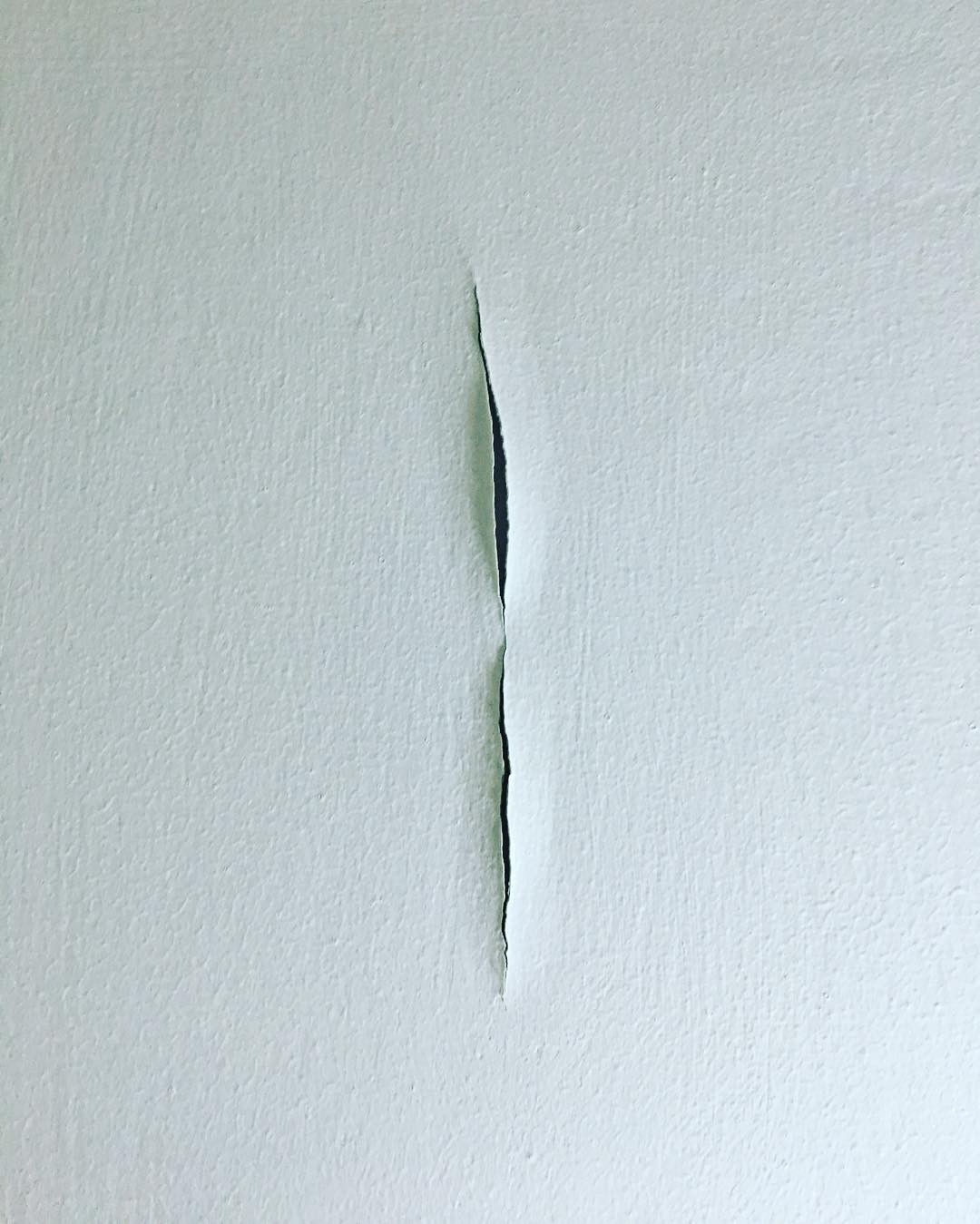
Condensation
One of the most common causes of paint peeling in bathrooms is condensation. This is particularly common in rooms with high humidity, such as bathrooms.
When moisture from showering or other activities accumulates on surfaces, it can cause the paint to peel. The best way to prevent this from happening is to keep your bathroom well-ventilated.
If you do not have an exhaust fan, you should open a window or door to allow the moisture to escape. You can also try using a dehumidifier to help reduce the amount of moisture in the air.
Leaking Roof
Another possible reason for a peeling bathroom ceiling is a leaking roof. If there is water seeping through the roof, it can cause the material on the ceiling to become damaged and start to peel off. Be sure to check for any leaks in the roof and repair them as soon as possible.
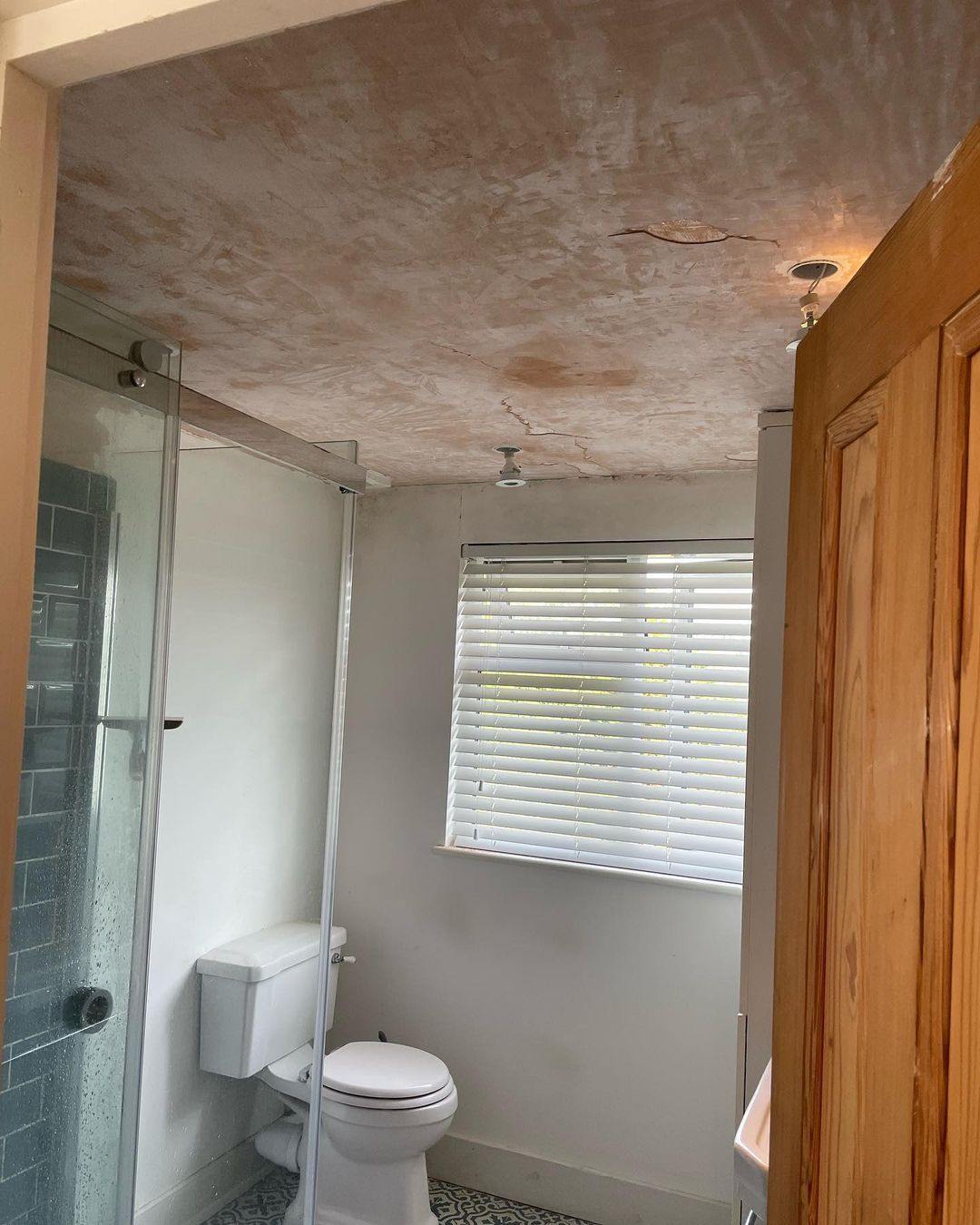
Other Possible Causes
There are a few other potential causes of peeling paint or varnish in the bathroom. These include incorrect cleaning methods, using the wrong type of cleaner, and using too much cleaner.
Be sure to follow the manufacturer’s instructions carefully when cleaning your bathroom to avoid these problems.
These are some of the most common reasons why a bathroom ceiling might start to peel. If you are unsure of the exact reason, it is best to consult a professional for help. In most cases, the problem can be easily fixed with some simple repairs.
How to Repair Bathroom Ceiling Paint Peeling
If your bathroom ceiling is looking a little worse for wear, don’t despair. Paint peeling from a bathroom ceiling is a common problem, but it’s one that can be fixed relatively easily.
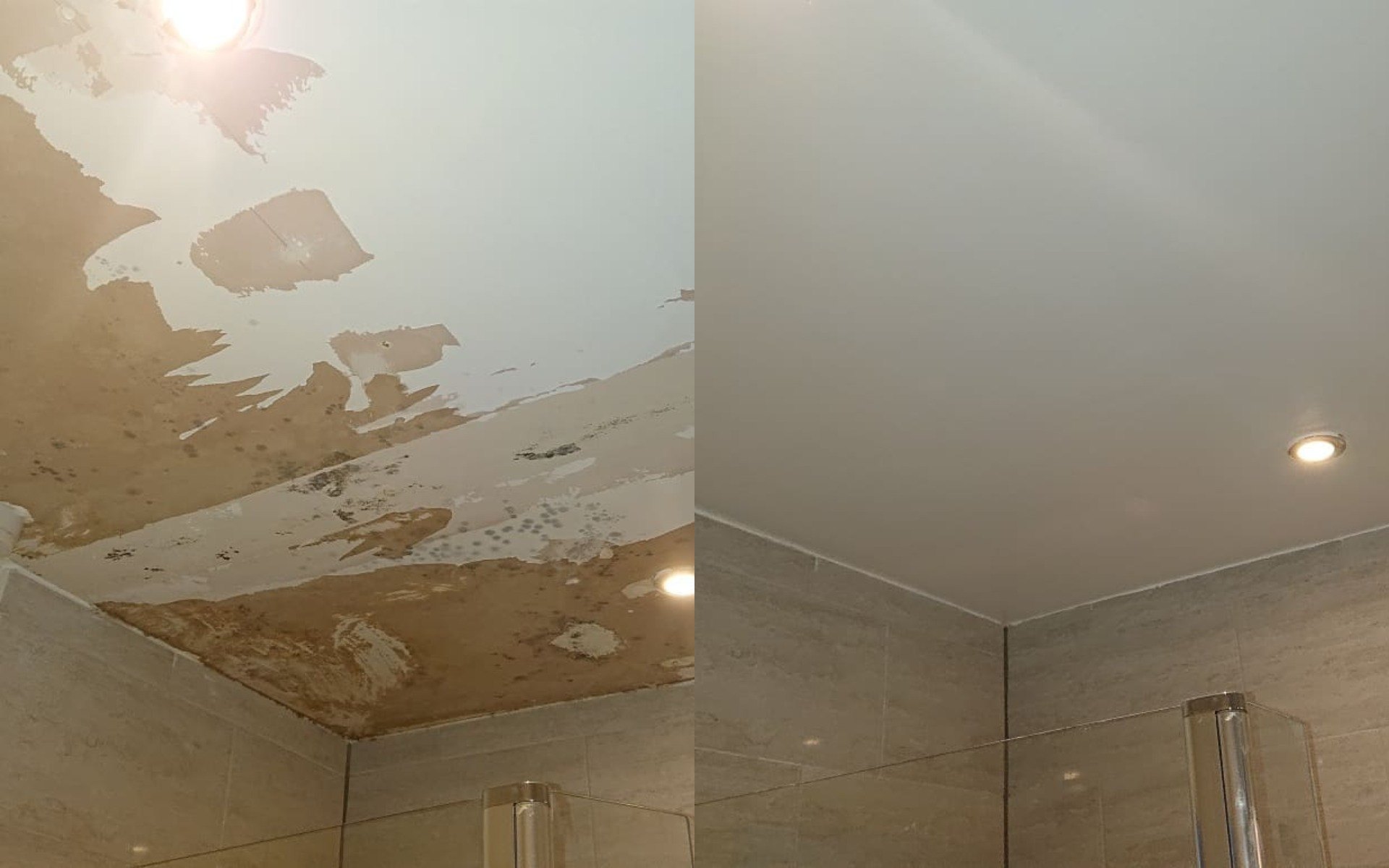
In most cases, all you’ll need to do is remove the loose paint, clean the surface and then repaint. Here’s a step-by-step guide on how to fix bathroom ceiling paint peeling.
- Be sure to put on your goggles and a dust mask before beginning any repairs. This will help protect you from any dust or debris that may be flying around. It can protect your eyes and lungs while you work.
- The first step is to remove any loose paint. Use a scraper or putty knife to carefully scrape away any paint that’s peeling or flaking off. If the area is large, you may need to use a heat gun to soften the paint so it’s easier to remove. Once all the loose paint has been removed, use a vacuum cleaner with a brush attachment to remove any dust or debris from the surface.
- Clean the surface. Once you’ve removed all of the loose paint, you’ll need to clean the ceiling surface to ensure that the new paint will adhere properly. You can do this by wiping down the surface with a damp cloth and then using a mild detergent to remove any remaining dirt or grime.
- If there are any holes or cracks in the ceiling, now is the time to fill them in. You can use joint compound or spackle to fill in small holes and cracks. For larger holes, you’ll need to use a piece of drywall or patch kit. Be sure to follow the manufacturer’s instructions carefully when patching or repairing the ceiling.
- Apply primer. Before you repaint, it’s always a good idea to apply a layer of primer to help the new paint stick better and last longer.
- Repaint the ceiling. Once the primer is dry, you can go ahead and repaint the ceiling with a fresh coat of paint. Be sure to use a paint that’s specifically designed for bathrooms; these paints are usually mold- and mildew-resistant.
- Allow the paint to dry completely before using the bathroom. This will ensure that the new paint adheres properly and doesn’t peel.
- Enjoy your newly painted bathroom ceiling!

These are just a few simple tips on how to fix bathroom ceiling paint peeling. With a little bit of effort, you should be able to get your ceiling looking like new again in no time.
How to Stop Bathroom Ceiling Paint Peeling?
Ceiling paint is specially formulated to resist the growth of mold and mildew, so it’s important to take steps to prevent these problems before they start.
Here are a few tips to help you keep your ceiling looking its best:
Allow enough drying time between coats. If your paint is peeling, it’s probably because you didn’t give the previous layer enough time to dry.
Make sure you read the instructions on your paint carefully and wait the appropriate amount of time before adding another layer. This will help ensure that each layer has sufficient time to set.
Use high-quality paint. The type of paint you use on your ceiling can have a big impact on how well it holds up over time.
If you want to avoid peeling paint, it’s important to choose a high-quality product that is designed for use on ceilings.
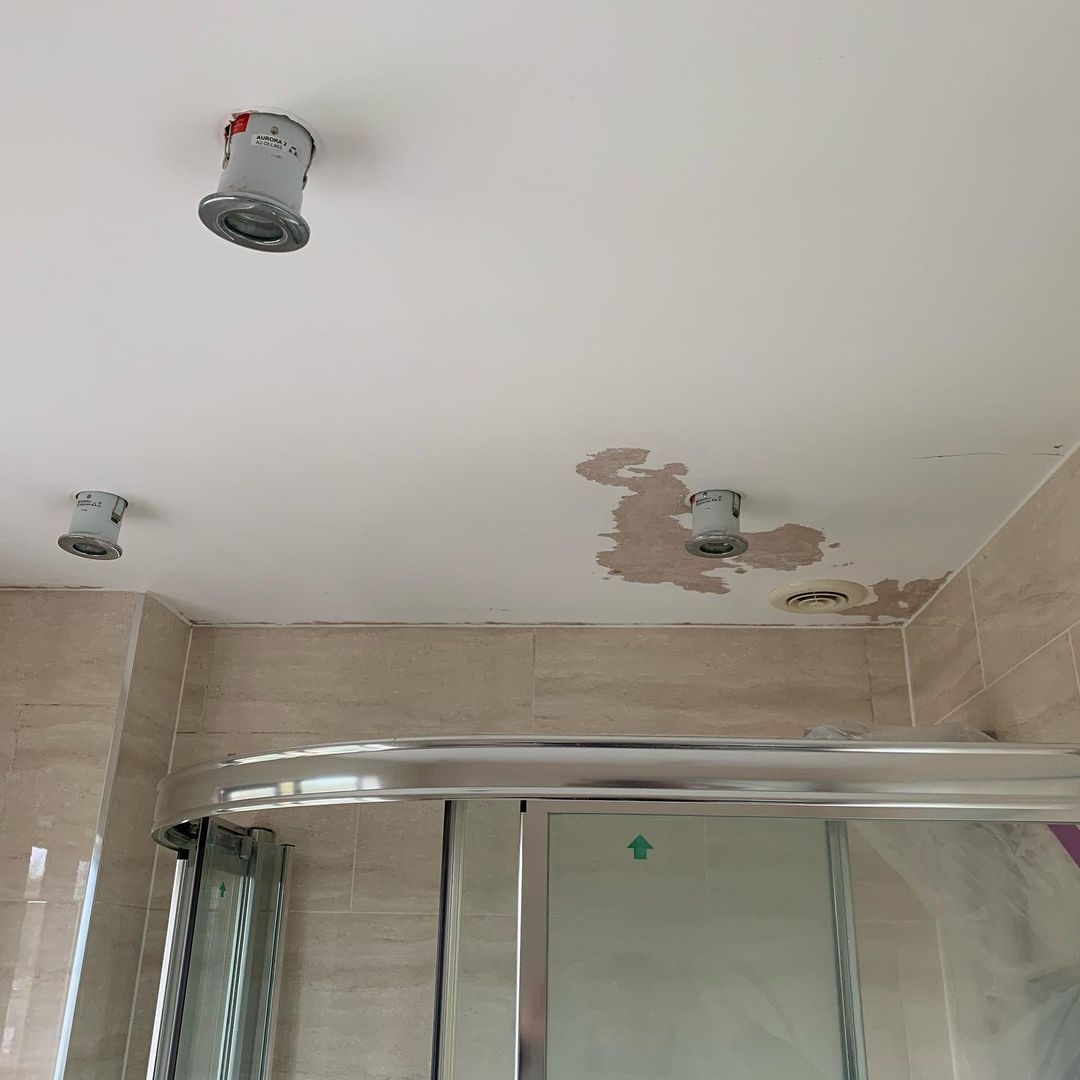
There are a variety of different paint brands and types available, so take some time to research your options before making a purchase.
In addition to using high-quality paint, it’s also important to properly prepare your ceiling before painting.
This means making sure the surface is clean, smooth, and free of any debris or imperfections. If your ceiling isn’t properly prepared, the paint is more likely to peel or chip over time.
Inspect the ceiling regularly for signs of peeling paint or other damage. Repair any problems as soon as possible to prevent further damage.
Finally, be sure to apply the paint evenly and in thin coats. Heavy, thick coats of paint are more likely to peel than thinner ones.
By taking these steps, you can help ensure that your ceiling paint will stay looking great for years to come.
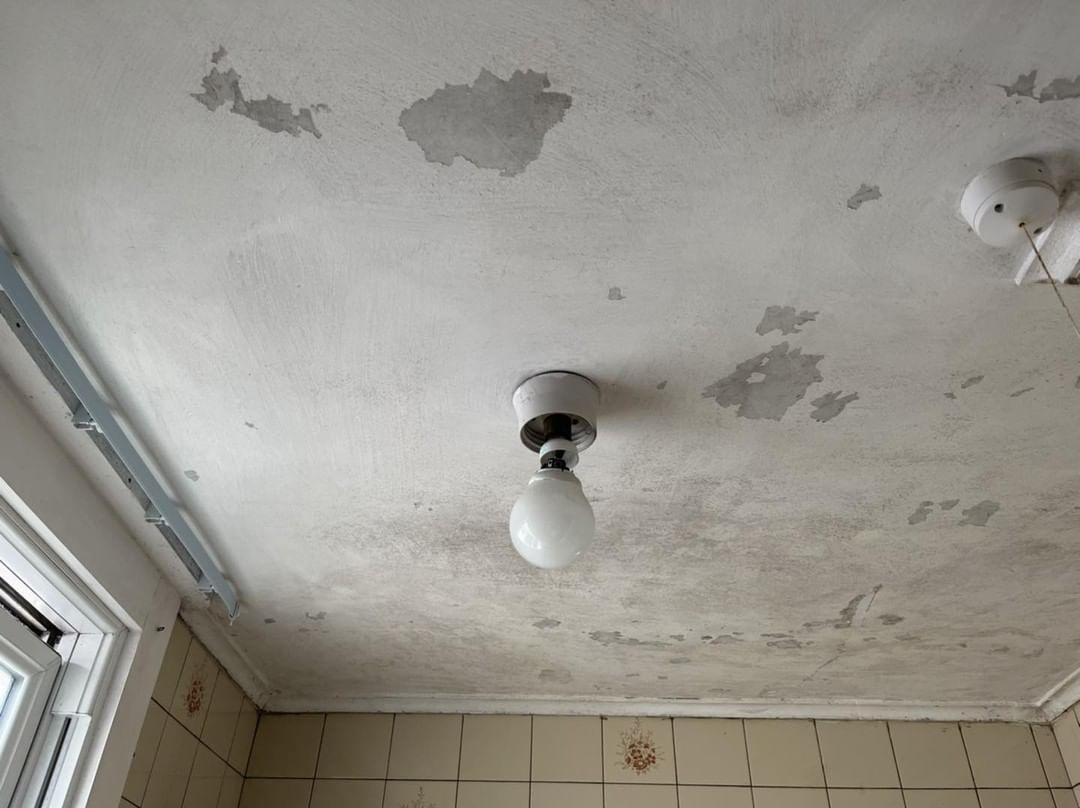
FAQ
What kind of paint should you use on a bathroom ceiling?
The best paint to use on a bathroom ceiling is acrylic semi-gloss paint. This type of paint is highly resistant to moisture and mildew, making it ideal for bathrooms. It also has a high sheen that will help reflect light and make the room appear brighter.
Why does paint peel off bathroom ceiling?
The most common reason why paint peels off bathroom ceilings is because of moisture. Bathrooms are typically very humid environments, which can cause paint to peel.
To avoid this, make sure you use paint that is specifically designed for bathrooms and that you properly ventilate the room while painting.
Can I paint over peeling paint?
No, you should not paint over peeling paint. Peeling paint is an indication that there is something wrong with the surface underneath and that painting over it will not fix the problem.
Almost all of the flaking or loose paint must be removed before plastering can begin. If you want a smooth, professional finish on your new plaster, make sure to scrape off any old paint or plaster beforehand.
How do I stop my bathroom ceiling from peeling?
The best way to stop your bathroom ceiling from peeling is to prevent moisture from building up in the first place.
This can be done by ensuring that the room is properly ventilated and by using a paint that is designed for bathrooms.
If you live in an area with high humidity, you may also want to consider using a dehumidifier in your bathroom.
Summary
There are a number of reasons why a bathroom ceiling might start to peel. Most often, it is due to condensation or a leaking roof.
In other cases, it might be caused by incorrect cleaning methods or using the wrong type of cleaner. However, in most cases, peeling bathroom ceiling can be easily fixed with some simple repairs.
By following the steps outlined above, you can have your bathroom ceiling looking good as new in no time.
